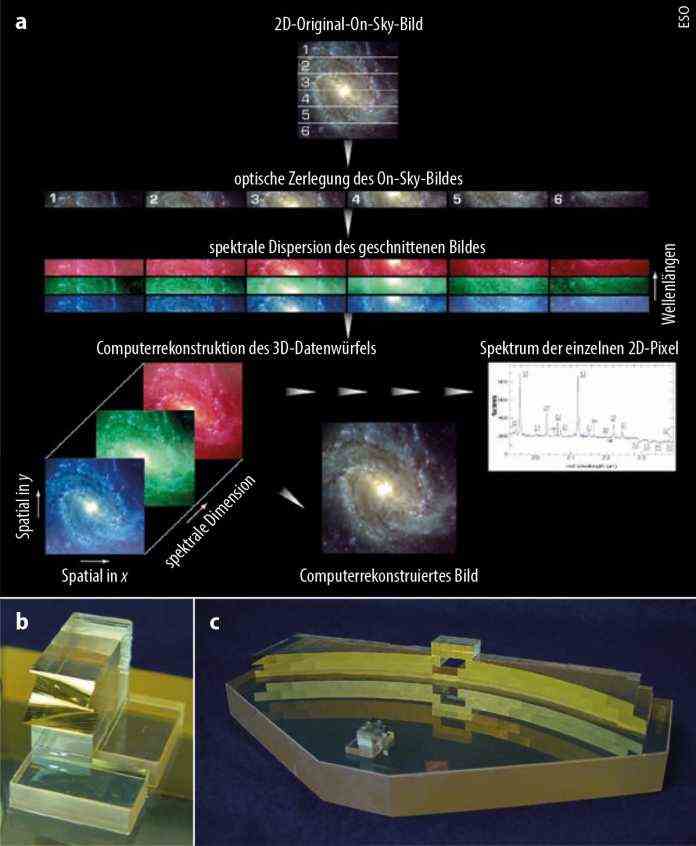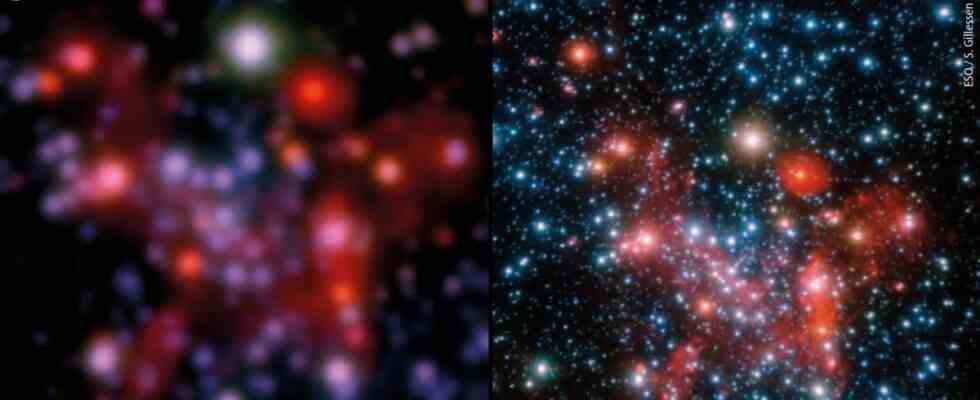This article was first printed in Physics Journal 21, 2022.
The SINFONI and GRAVITY instruments, deployed at the European Southern Observatory’s Very Large Telescope, have revolutionized the study of exoplanets, supermassive black holes and star-forming galaxies in the early Universe. Both instruments played an important role in the discovery and characterization of the black hole at the galactic center.

What is missing: In the fast-paced world of technology, there is often the time to re-sort all the news and background information. At the weekend we want to take it, follow the side paths away from the current, try different perspectives and make nuances audible.
The eminent sky explorers Galileo Galilei, Isaac Newton, Tycho Brahe, William Herschel and Albert Michelson built the devices themselves with which they observed the sky. Astronomers still follow their example today: Our group at the Max Planck Institute for Extraterrestrial Physics (MPE), headed by Reinhard Genzel, thrives on designing and building new instruments, observing them and thus creating new windows into the cosmos to open.
The advantages of building your own instruments are obvious: we can align the design closely with our scientific goals and use the new apparatus first. We would like to present two of them, SINFONI and GRAVITY, below. One of its applications is observing the galactic center and its black hole.
Stephen Gillessen received his doctorate from the University of Heidelberg in 2004 with a thesis on the alignment control of the Cherenkov telescopes of the HESS experiment in Namibia. He then joined the group of Reinhard Genzel at the Max Planck Institute for Extraterrestrial Physics (MPE). Since then he has been researching stellar motion in the galactic center and is part of the team developing new instruments for use on ESO telescopes.
Frank Eisenhauer received his doctorate from the LMU Munich in 1998 and was already involved in the development of new types of astronomical instruments: a near-infrared camera for adaptive optics for observing the star-forming region NGC 3603. At the MPE he heads the development and scientific elaboration of large-scale astronomical instruments and experiments such as SINFONI and GRAVITY. Eisenhauser was awarded the Stern-Gerlach Medal in 2022 for his groundbreaking work on the development and use of instruments in infrared astronomy and on adaptive optics.
CCD and infrared detectors are two-dimensional pixel arrays onto which the two-dimensional celestial sphere can be imaged using a camera focused to infinity. The use of filters and multiple exposures allow color information to be obtained. In order to break down the light into its spectral colors, you need one dimension of the detector surface for the wavelength axis. This leaves only one axis for the spatial resolution, so that the spectroscopic information is only available along a one-dimensional slit. An astronomical instrument can therefore either “see” – that is, provide good spatial resolution and moderate spectral information – or “hear”, that is, provide good spectral resolution with limited spatial information.
The solution for combining both aspects is strongly reminiscent of how a knitted sweater gets on the other side of a locked door: you thread it on, transport the wool thread through the keyhole into the next room and send the knitting instructions on a piece of paper under the crack in the door with. The basis of “Integral Field Spectroscopy” (IFS) differs only slightly: the image field is cut up into individual rows and optically arranged to form a one-dimensional pseudo-slit.
This can be spectroscopically analyzed in the conventional way so that the spectra of all series are available at once. These individual spectra then have to be reassembled in such a way that their arrangement corresponds to the two-dimensional field of the sky – no problem with computers. The result, a three-dimensional data cube, has two spatial axes and a full spectrum in each pixel.

The field splitter (a) optically splits the image of the astronomical object into individual lines and arranges them in a slit. This is spectrally dispersed and reconstructed in the computer as a data cube. SINFONI’s field splitter (b) splits the square field of view by reflecting the different lines in different directions and combining them with a set of secondary mirrors into a single slit (c).

